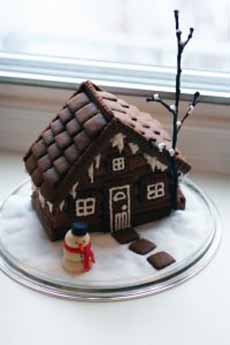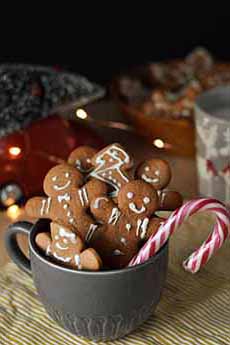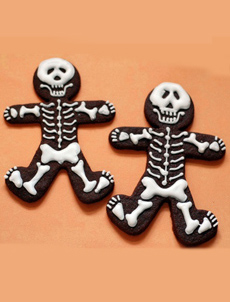Gingerbread History & Recipes For National Gingerbread Day
|
November 21st is National Gingerbread Day, a time for a bit of gingerbread history and some tasty recipes (below). Gingerbread cookies are examples of rolled cookies, a.k.a. cutout cookies (there are 11 basic types of cookies). While they are most often considered cookies for Thanksgiving and Christmas, there’s no reason why they can’t be enjoyed year-round, like their “siblings” ginger cookies and gingersnaps. There are ginger cookies, gingersnaps, and gingerbread. Crusaders returning from the Holy Land‡ (1095-1291) brought ginger and other spices. Prior to the 15th century, “gingerbread” referred to preserved ginger*. At that time, ginger was found to have medicinal qualities† and the dried and ground spice began to be used in cakes and cookies. The spice ginger, zingiber in Latin, became gingerbras in Old French, gingerbread in Medieval English, and Ingwer in German. What we call gingerbread cookies are the German spice cookies known as Lebkuchen‡‡. Lebkuchen has its roots in the honey cakes (Honigkuchen) baked in ancient Egypt as offerings to the gods. However, the Lebkuchen that emerged in the Middle Ages was created for holidays and festivals by Franconian monks in the 13th century, in the region of Bavaria. Nuremberg, the second-largest city in Bavaria (after its capital, Munich) became the center for Lebkuchen production for two reasons. The forests around the city provided a wealth of honey, the sweetener; and the city was located at the crossroads of the ancient spice trade routes [source]. With the growth of the German guilds (not unlike today’s unions), only Lebkuchen Guild members could bake gingerbread [for sale], except during Christmas, when anyone could bake it. The Medieval German Lebkuchen Guild transformed gingerbread into a highly-decorated art, crafting fancy shapes, decorated with sugar and gold. Gingerbread cookies were (and are) traditionally made in shapes—flowers, hearts, trees, and so forth. They vary by size and can be iced and decorated. But they weren’t making gingerbread men! The honor for that invention probably goes to Queen Elizabeth I—or more precisely, an unnamed palace baker who toiled during her reign (1558 to 1603). Her Majesty bestowed “portrait” gingerbread cookies upon important court visitors, decorated in their likenesses. The tale of Hansel and Gretel, published in 1812 (as part of Grimm’s Fairy Tales—you can read them here), vastly increased the popularity of gingerbread cookies and other treats, such as gingerbread houses, and gingerbread Christmas cards. Gingerbread men and animals became popular Christmas tree ornaments. Today, you can make everything from gingerbread bar cookies to gingerbread whoopie pies to cookies that look like tiny gingerbread houses (photo #5), and entire gingerbread villages. > The history of the gingerbread house. > A glossary of delicious cookies. > The history of ginger. |
|
|
|
________________ *Preserved ginger is the root peeled, cooked, preserved in sugar syrup, and then chopped and used in desserts. The sugar syrup, which absorbs ginger flavor, can be used separately. †Among other things, the volatile oils in ginger, gingerols, and shogaols, help with digestion, gas, and cramping; relieve nausea; help to reduce inflammation and fever; help prevent blood clots; make ginger a natural decongestant and antihistamine and may also help lower LDL cholesterol. But that’s no reason to eat lots of cookies! ‡In addition, Europeans discovered sugar and coffee in the Middle East, which were then largely foreign commodities, along with rice and varieties of fruits (among other foodstuffs). They also brought back cotton cloth for clothing and sheets, mattresses, glass mirrors, wheelbarrows, and writing paper,all of which helped to improve the standard of living in Europe. Algebra and many other forms of modern math were carried home by the Crusaders, along with the game of chess [source]. ‡‡There are different types of Lebkuchen. Here’s more about them. CHECK OUT WHAT’S HAPPENING ON OUR HOME PAGE, THENIBBLE.COM.
|
||








